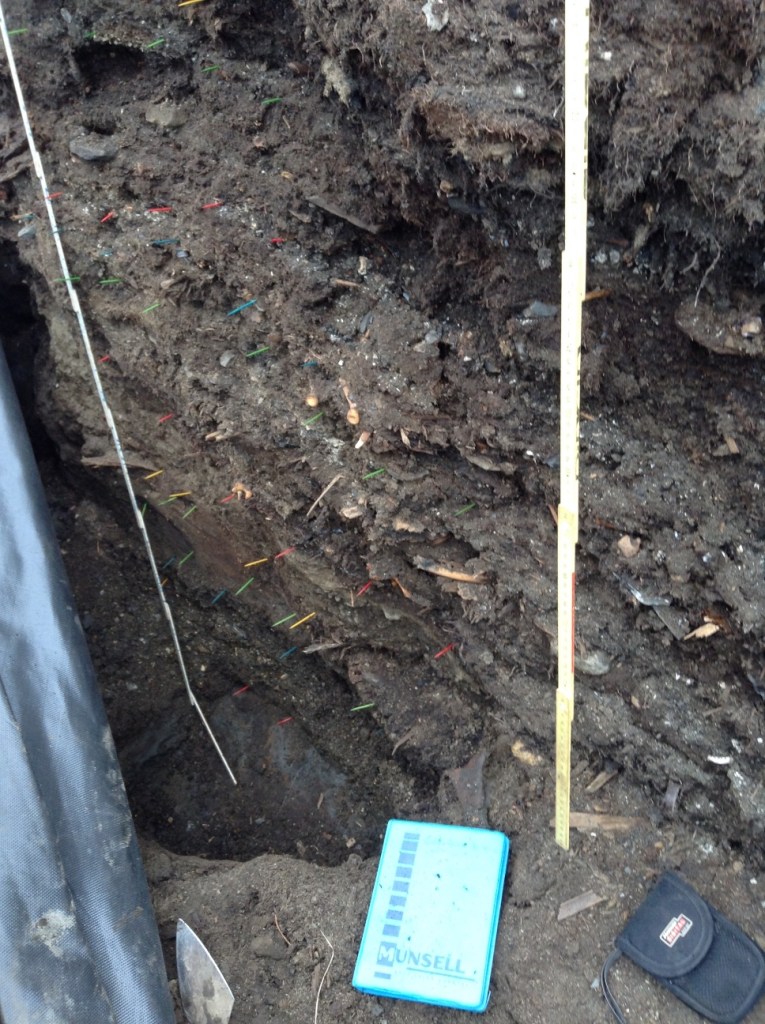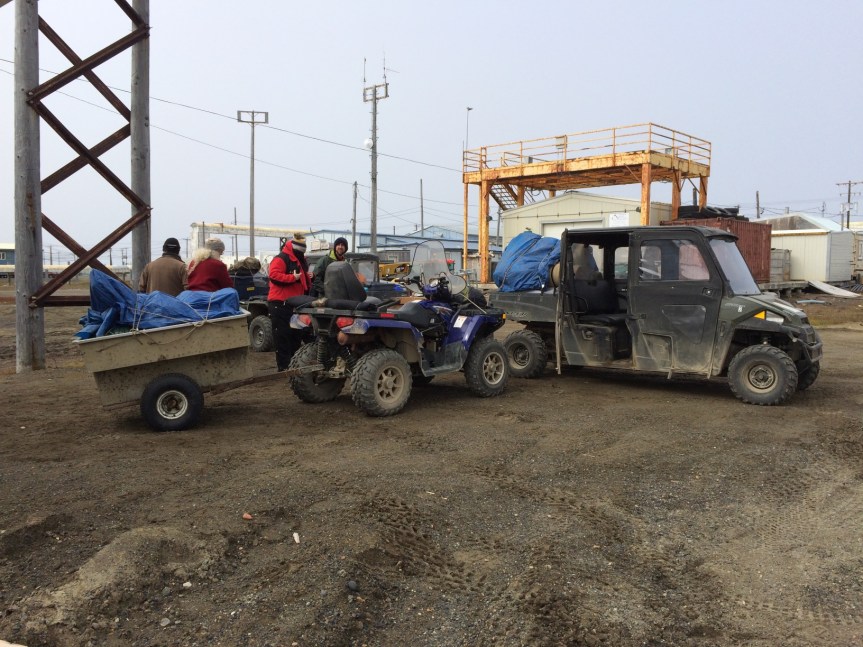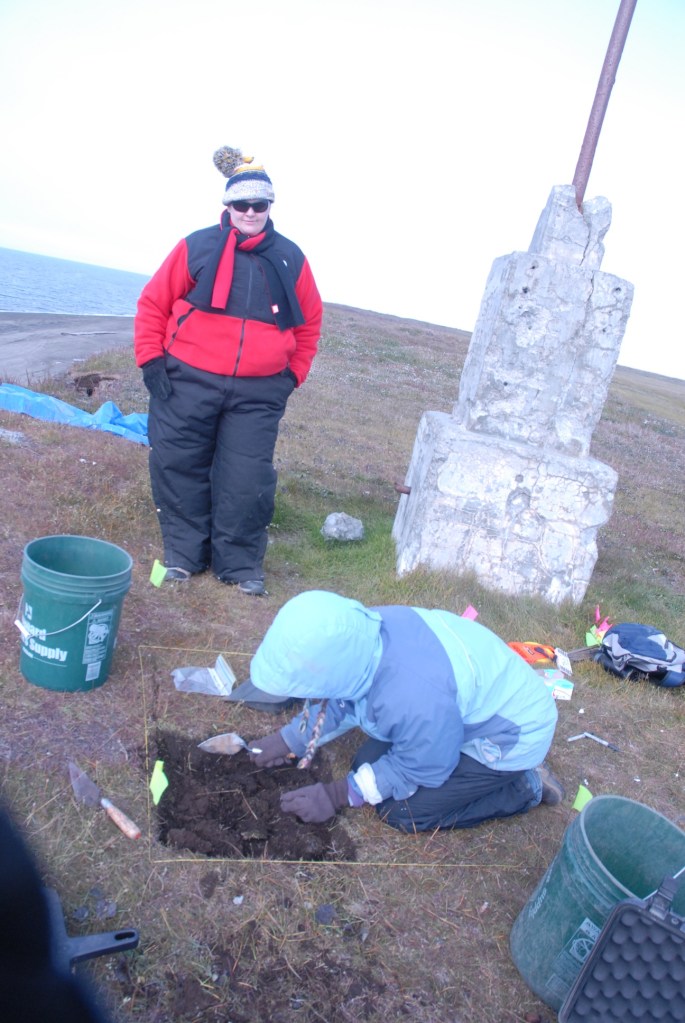We have been getting gear ready for days. The next challenge is to get it (and ourselves) to the field. The weather and equipment have not been cooperating. The shore fast ice is just really melting this week, so we hadn’t been able to take anything down before. Then the wind changed to the west, leading to one helicopter-assisted rescue in front of my house and ice against the shore. We staged gear in the “yellow shed” (a small warehouse shared by archaeology and the ARM program) and we waited. Yesterday, the wind went east for a bit and pushed the ice off the beach, so we rushed to load the UIC Science boat Crescent Island and sent heavy, durable & waterproof things down to the site. Four of the crew went along and they and the two UICS logistics staff who were running the boat put the stuff in a secure spot and headed home just as the wind changed back. They made it before the ice came back in.
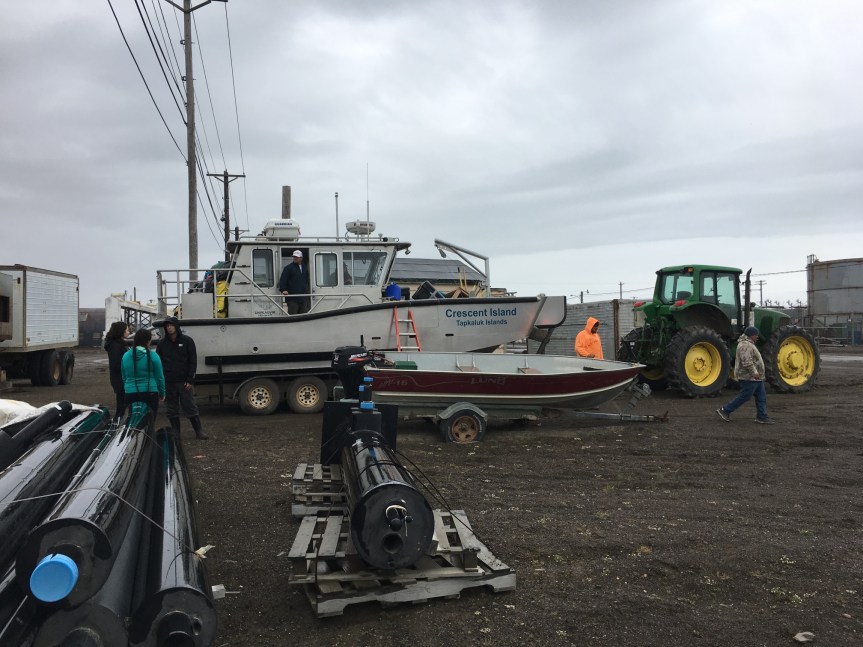
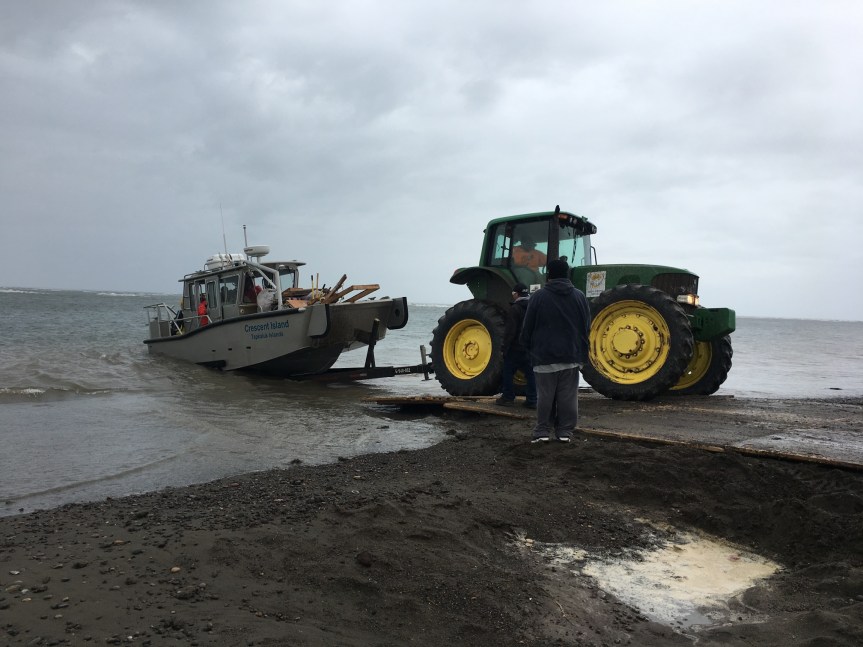

Today, the wind wasn’t as strong as predicted, so Kaare and a bunch of the crew were going to head down with a little more gear, set up tents, and Ben Fitzhugh, Garrett Knudsen, Zac Peterson & Katie Daniels were going to stay and start stripping sod. We packed up after lunch, but various ATVs decided to not behave (one only wanted to run well in reverse) so it took a while.


By the time they got to Nunavak it was pretty late, and the stream was still really deep to cross, but it was draining, so they came home and will try again tomorrow. We may try to do two trips to get more folks down, but there will be one more boat trip Sunday or Monday, so some folks will go down that way.
Meanwhile, I had discovered that the newly-returned batteries for the transit were really not in as good shape as the tests at the surveying equipment shop indicated. I spent some time chasing down replacement batteries. In the end, GPS Alaska had a charger for the new batteries in stock, could order me new batteries, and had two that they use which they are renting to us at a very low price until our come in and get shipped to us. My boss is in Anchorage and going to fly his plane up, so he was able to pick them up and bring them along. All the other stuff is in decent shape, so we should be able to work and record what we are doing.



